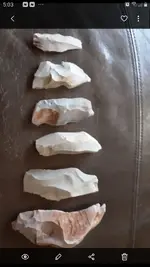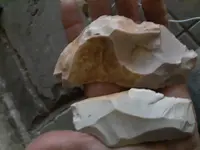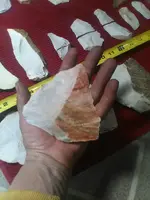Gravelbar32
Full Member
I have been dying to get back to my bluff butcher/ cache site where I found the 27 large flakestone knives that I chronicled here ad nauseam. I finally got there today and scraped around in the same ten foot spot and found six more.
 today
today
 today
today
That makes 33 large pieces, not a single point, no flaking debris, pottery, scraper or drill. A few pieces of bone and tons of burned rock. Curiously, only a spec or two of charcoal. These folks were not there very long.
 Some of the previous pieces.
Some of the previous pieces.
 today
today today
todayThat makes 33 large pieces, not a single point, no flaking debris, pottery, scraper or drill. A few pieces of bone and tons of burned rock. Curiously, only a spec or two of charcoal. These folks were not there very long.
 Some of the previous pieces.
Some of the previous pieces.
Last edited:
Upvote
0



